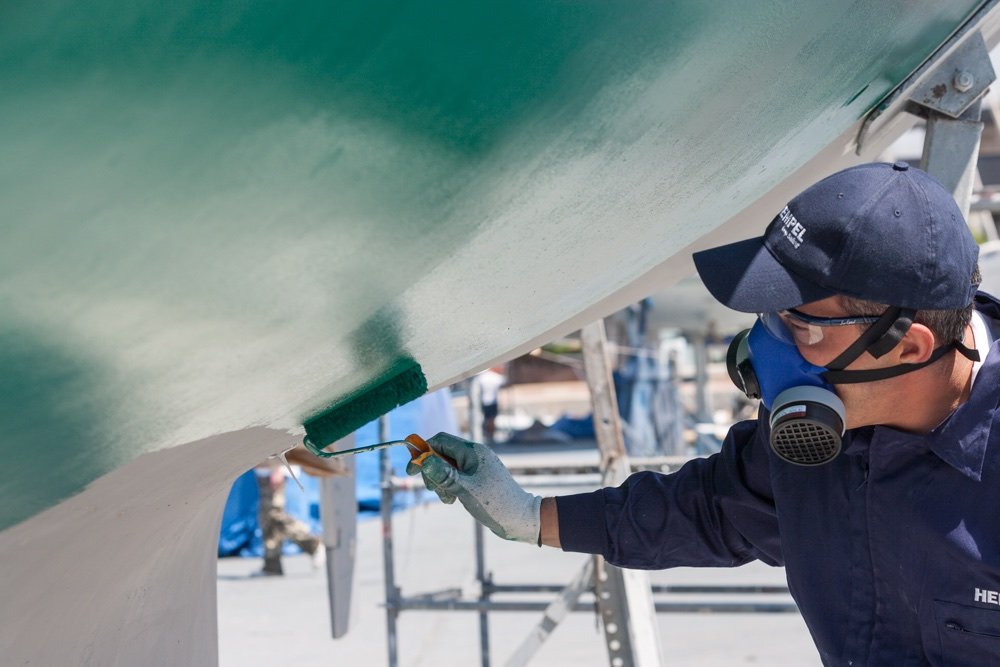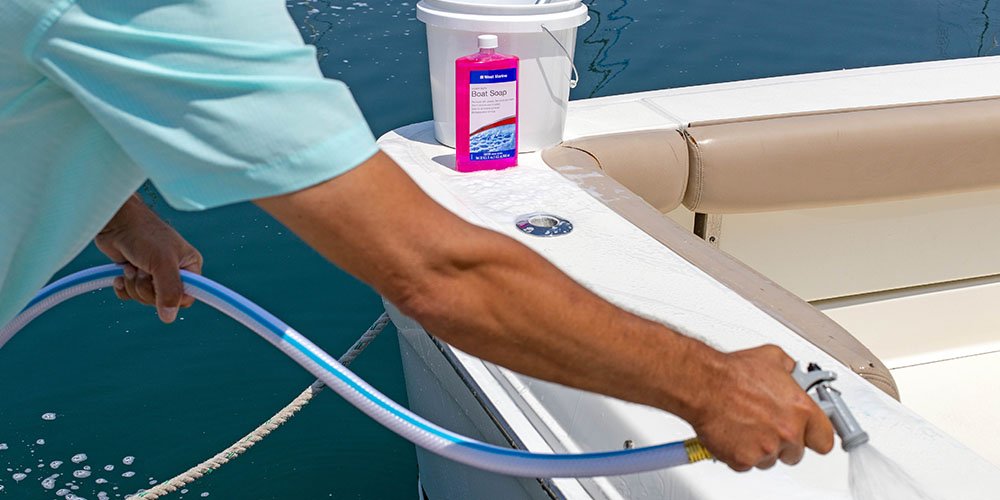PROTECTING YOUR INVESTMENT
Marine paint for fiberglass boats is a crucial aspect of boat maintenance. Fiberglass is a popular boat material due to its durability and strength. However, over time, exposure to the elements can cause the fiberglass to fade, crack, or become damaged. Painting a boat is one of the best ways to give it a new look and even increase its value.
A fresh coat of paint can do wonders even for an old boat. Not only it will breathe new life into your boat, but also will prevent damage to the hull and inhibit the growth of marine organisms that attach to fiberglass and metal and eventually lead to surface drag, lower performance, decreased speeds, higher fuel costs and even damage to propellers and other underwater mechanics.
-

The most important step
Any paint job is only as good as the preparation that precedes it, and the skill of the professional doing the work. Surface preparation consists of:
- Fixing any scratches, gouges, or cracks. A fresh coat of paint won’t cover up imperfections, but instead is more likely to increase their visibility;
- Washing the entire boat to remove all contaminants;
- Protecting all hardware and fittings with painter’s tape, or removing it from the boat entirely;
- Dewaxing all areas that have been exposed to wax;
- Thoroughly sanding and/or stripping the surfaces to be painted;
- Cleaning away all sanding dust and/or stripping chemicals and materials;
- Applying the primer (if necessary).
-

Selecting the finish
When choosing a paint for your boat, consider the following methods:
One-part alkyd (oil resin base) enamel is widely used because it is easy to apply and affordable. The enamel is applied straight from the can, has good adhesion and build, and dries through evaporation. It has good weatherproofing characteristics, and is easy to touch up if scratched.
Two-part polyurethanes are formed by mixing two components, resulting in a chemical reaction that forms the chemically cured surface. This product offers a higher level of finish, a shinier gloss, color retention, hardness, longevity, UV and scratch resistance. All that beauty comes at a higher price in terms of paint costs, equipment, and time for surface prep, mixing, application, and curing.
New fiberglass-reinforced composite boats start out with a glossy gelcoat that seals and protects the underlying structure. Once applied, it dries into a hard, shell-like casing. Gel coating is designed to be UV protective and resistant to harsh chemicals. A gel coat finish is durable and, when properly maintained, can last for decades without major repairs.
-

Proper care
A good paint job should last for years with proper care:
- Don't use harsh detergents or abrasive cleansers for cleaning. Use only a very soft, natural bristle brush or mop. Never use plastic or stiff brushes that will scratch the paint.
- If you must use an abrasive such as on non skid, remember that chlorinated cleansers will damage the paint if allowed to remain in contact for more than a few minutes. Be sure to rise thoroughly, especially the point where the water runs down the hull side.
- Keep the boat clean. Accumulated dirt and atmospheric fallout can result in acids forming on the surface of the paint and damaging it.
- Wash down thoroughly to remove all salt after using, including the hull sides.
- Wax the boat at least once per year, except for walking surfaces, or course.
- Avoid cold weather damage; cover the boat during winter lay up.

